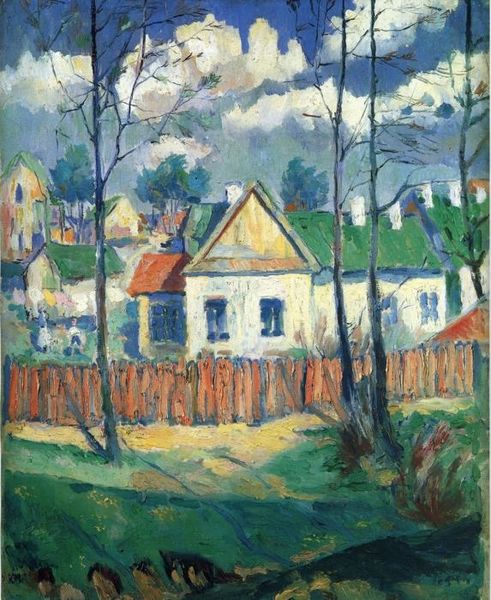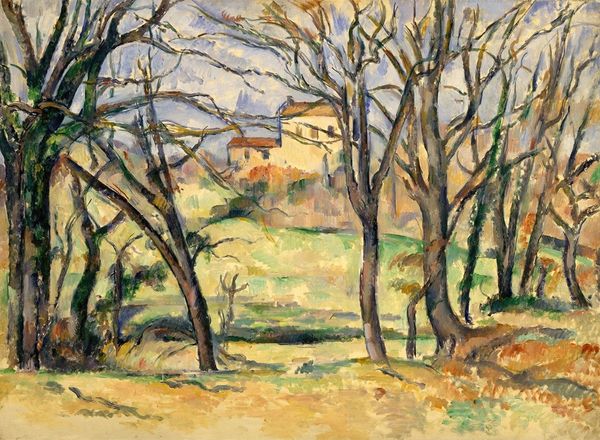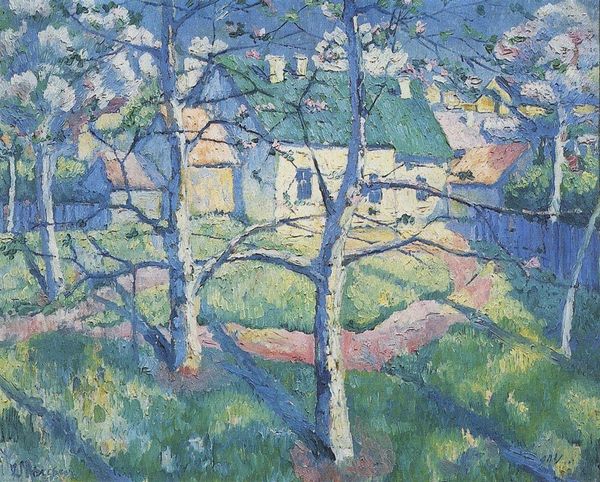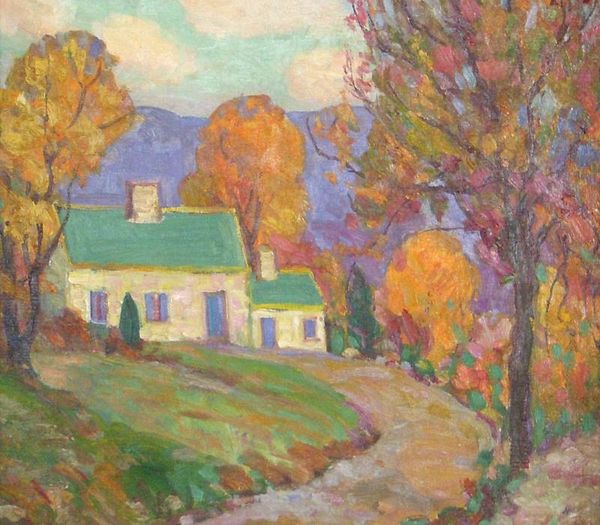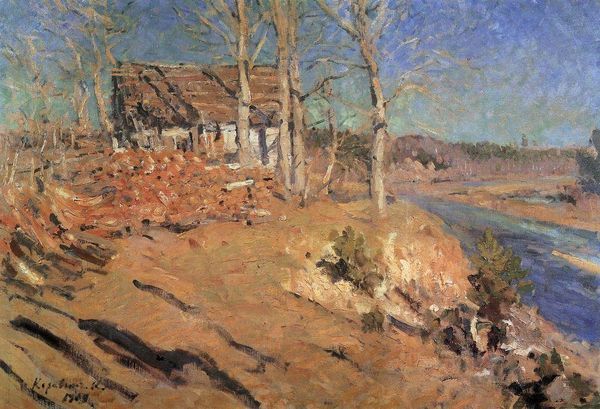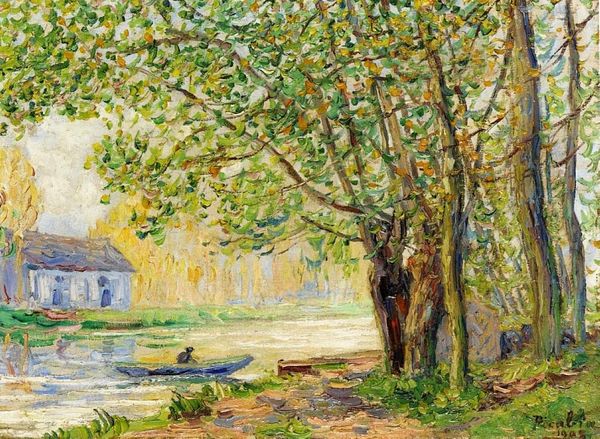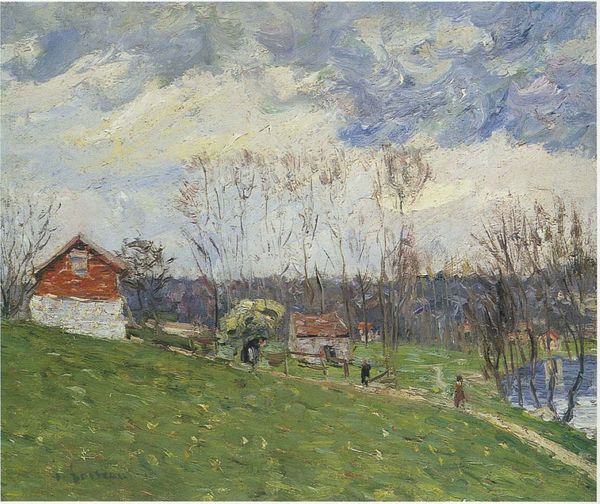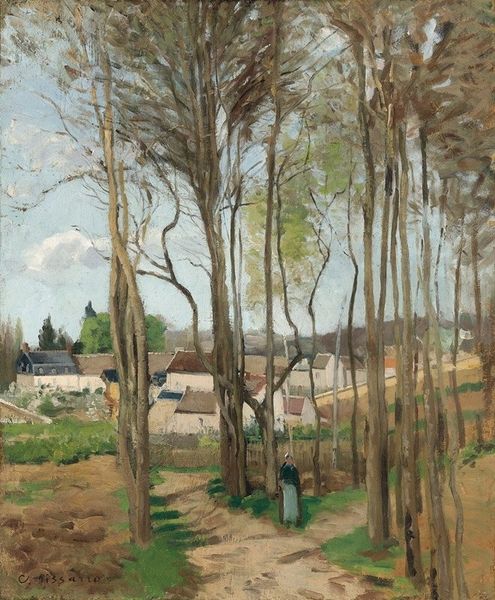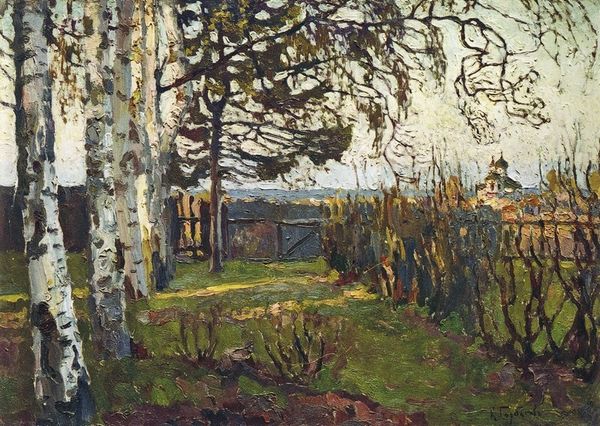
painting, oil-paint
#
tree
#
painting
#
oil-paint
#
landscape
#
german-expressionism
#
house
#
impressionist landscape
#
oil painting
#
expressionism
#
expressionist
Dimensions: 48.3 x 68 cm
Copyright: Public domain
Curator: Welcome. We’re standing before Kazimir Malevich’s "Landscape near Kyiv," painted around 1930. It's a fascinating example of his later, often overlooked, figurative work rendered in oil paint. Editor: The colors! They’re immediately striking. Muted blues and greens contrasted with that fiery red roof. There's a rustic, almost melancholy, atmosphere despite the vibrant hues. Curator: The painting appears to me as something beyond the simple recording of a landscape. I think it is essential to consider this work as part of Malevich's broader negotiation of identity within the tumultuous socio-political landscape of the time. There are certain ambiguities embedded in his turn towards figuration. Was it a strategic retreat from abstraction? Or something more? Editor: Ambiguity is key. See the little outbuilding there? Its presence alongside the larger structure speaks volumes. Shelters symbolize safety, a place to build resilience. Here, it evokes something deeper for me – a persistent hope nestled within simplicity. The gnarled branches feel very familiar in Slavic art. Curator: You're right; that house and structure do resonate with folk art. Looking closer at that bold red, how does this read given what we know of that era? What did “home” even mean under Stalin's regime, particularly to an avant-garde artist under increasing pressure to conform to socialist realism? I sense the expressionism here isn’t merely aesthetic. It represents a psychological landscape shaped by external constraints. Editor: I agree the sociopolitical backdrop colors my perspective, especially knowing this painting was made in the Soviet era. But to me the bare branches – aren't they also about the cyclical nature of life? Of resilience and return even in the face of hardship? This return to landscape, in some ways, reaffirms those basic, immutable truths. Curator: The raw expression and use of bold color and abstracted forms contribute to the tension, suggesting themes that relate to a sense of alienation amidst forced assimilation. But it has nuances that call to both historical and political awareness to reveal deeper perspectives on identity during oppressive times. Editor: Yes. I’m moved by the persistent power of visual language that is woven into everyday life, with folk art’s symbolism offering refuge, reminding us to reconnect to cultural heritage and hold firm to one’s truth when society goes awry.
Comments
No comments
Be the first to comment and join the conversation on the ultimate creative platform.
